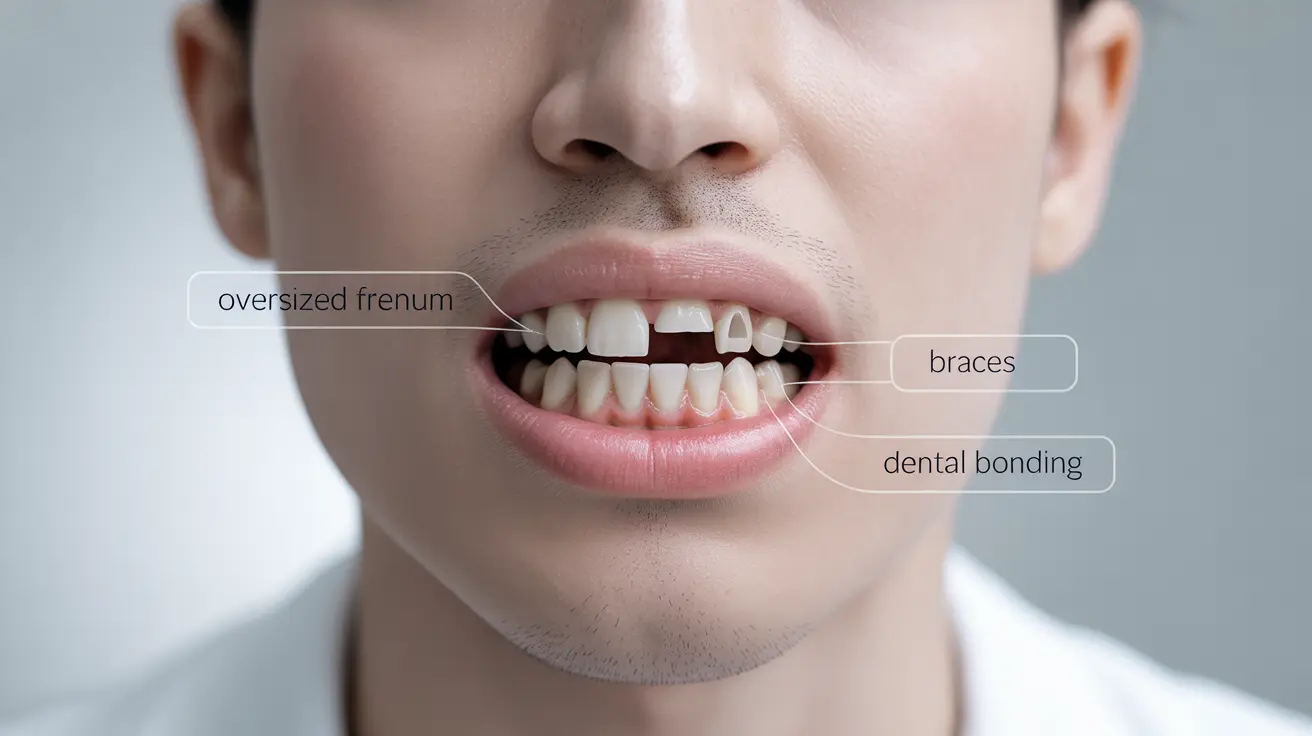Diastema, a dental condition characterized by a noticeable gap between teeth, is a common occurrence that affects people of all ages. While most frequently observed between the front upper teeth, these spaces can appear between any teeth in the mouth. Understanding the causes, available treatments, and preventive measures can help individuals make informed decisions about managing their diastema.
Whether you're considering treatment for cosmetic reasons or concerned about potential underlying issues, this comprehensive guide will explore everything you need to know about dental gaps and the various options available for addressing them.
Understanding the Causes of Diastema
Diastema can develop due to various factors, ranging from natural genetic predisposition to behavioral habits. Some of the most common causes include:
- Genetic factors and inherited traits
- Mismatched jaw and tooth size
- Missing teeth or undersized teeth
- Oversized labial frenum (the tissue connecting the lip to the gum)
- Gum disease causing bone loss
- Abnormal swallowing reflexes
Treatment Options for Dental Gaps
Orthodontic Solutions
Orthodontic treatment often provides the most comprehensive solution for addressing diastema. Traditional braces or clear aligners can effectively close gaps by gradually moving teeth into proper alignment. The choice between these options typically depends on the severity of the spacing and individual patient preferences.
Cosmetic Dental Procedures
For those seeking immediate results, several cosmetic dentistry options are available:
- Dental bonding
- Porcelain veneers
- Dental crowns
- Composite resin restorations
Surgical Interventions
In some cases, particularly when an oversized labial frenum is the primary cause, a simple surgical procedure called a frenectomy may be necessary before pursuing other treatment options.
Prevention and Early Intervention
While some cases of diastema are genetic and cannot be prevented, certain measures can help reduce the risk of developing gaps or prevent them from worsening:
- Early detection and treatment of gum disease
- Addressing harmful oral habits in children
- Maintaining good oral hygiene
- Regular dental check-ups
- Proper tongue positioning during swallowing
Frequently Asked Questions
What are the common causes of diastema, and is it preventable?
Diastema commonly occurs due to genetic factors, mismatched tooth-to-jaw size ratio, oversized labial frenum, or gum disease. While genetic cases aren't preventable, maintaining good oral hygiene and addressing harmful habits early can help prevent some forms of diastema.
How is diastema typically treated, and what are the cosmetic options available?
Treatment options include orthodontic solutions like braces or clear aligners, cosmetic procedures such as dental bonding and veneers, and in some cases, surgical interventions. The choice of treatment depends on the underlying cause and individual preferences.
Can thumb-sucking or other childhood habits cause diastema, and if so, how can it be prevented?
Yes, prolonged thumb-sucking and similar habits can contribute to the development of diastema. Early intervention, gentle discouragement of these habits, and proper oral development guidance can help prevent gap formation.
What's the difference between using dental bonding and veneers for closing gaps between teeth?
Dental bonding involves applying a tooth-colored resin material directly to the teeth and is typically less expensive and reversible. Veneers are custom-made porcelain shells that offer a more permanent and durable solution but require removing some tooth enamel.
Is diastema a sign of any underlying dental health issues, or is it purely a cosmetic concern?
While diastema is often purely cosmetic, it can sometimes indicate underlying issues such as gum disease, oversized frenum, or problems with tooth development. A dental evaluation can determine whether the gap is cosmetic or requires medical attention.




